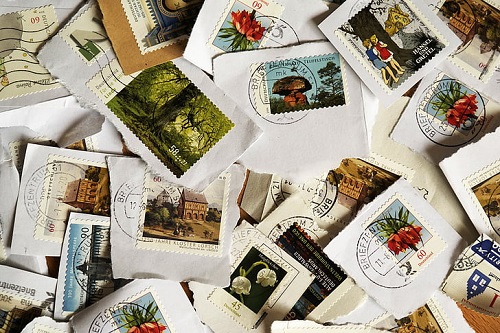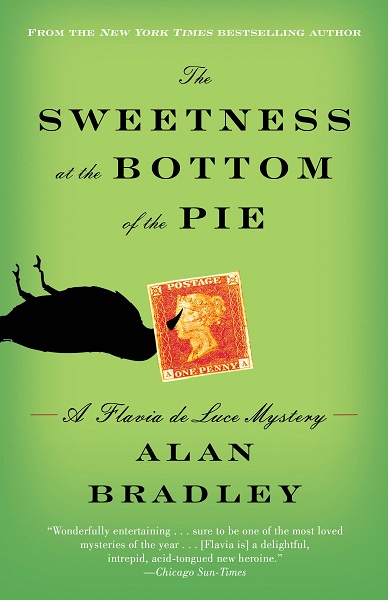
Unless some sweetness at the bottom lie,
Who cares for all the crinkling of the pie?
With the above quote, Alan Bradley begins his book, The Sweetness at the Bottom of the Pie [most recent English edition: Penguin Random House, 2010. ISBN 9780385343497]. Strange title, right? That’s what I thought, but after reading the book, I understood its meaning. My mom got me the novel because of that interesting title—and my crazy love for mysteries. It helped, too, that the book was the winner of some prestigious award for mystery novels and an international bestseller. I devoured it one day, like the sweet pie in the title. The book does have this inimitable flavor—the flavor of strong English tea and a hot, crispy cinnamon pastry, or a steaming bowl of that famous British oatmeal. Either way, Braley’s novel simply charmed me, and in the evenings I would give in to flights of fantasy, thinking up intricate plots with crimes and punishments. My dreams transformed into mysteries in which I chased after criminals, and turned into nightmares as the villains caught up with me.

I imagined a gloomy old estate (the book’s events unfold in 1950 in Great Britain in just such a dilapidated castle). I tried to picture myself as the heiress of a grand English lineage. The book’s heroine even helped me in school, by inspiring an interest in chemistry (a truly magical science, as I discovered) and history, all kinds of puzzles and quests, and bringing tiny details together to understand the big picture.
So who is this heroine? Eleven-year-old Flavia de Luce is the youngest daughter of a colonel. She lives at Buckshaw estate with her sisters and father. Her sisters treat her with condescension (Flavia’s the youngest), but also wariness—who knows what she’ll think of next. Daphne and Ophelia see her as an ill-mannered troublemaker. True, she’s constantly running dangerous experiments in her lab and sticking her nose in police investigations. Her father, for his part, doesn’t mind. In his youngest, headstrong daughter, he sees his beloved wife, who was killed in a mountaineering accident.
In the summer of 1950, the calm country life is disrupted with the murder of a stranger and the arrest of old Colonel de Luce. While Daphne and Ophelia wring their hands and cry into their lace handkerchiefs, Flavia investigates and is persistent in trying to prove that her father isn’t guilty. She’s certain of it. Her sharp mind and passion for chemistry will help her solve the puzzle that eludes local police. On the top floor of the house is a huge laboratory with a lovely old library, which young Flavia has at her disposal. I got a little jealous reading how well she understands chemical substances—all this knowledge actually comes in handy! I think the author slightly exaggerated Flavia’s intellectual abilities. For eleven, she’s almost too smart—she thinks just like an adult. She’s basically a child prodigy! I’ve never seen anyone like that. But who’s to say people like that don’t exist? So you really want to read and learn new things after finishing this book—what if it all comes in handy and you can help crack some case? And then, as for any eleven-year-old girl, a bike comes to the rescue: Gladys, Flavia’s trusted companion and only friend.
The book has lots of interesting historical facts and references, maybe even too many. There’s a lot about the history of postage stamps in particular, since the mystery’s plot hinges on a rare stamp. This all makes for an interesting and educational read.
The most important and intriguing question is of course: “who done it?” To find out, we could even go as far as quietly peeking at the end. But you know what? With this book, that trick won’t work. You have to read carefully, paying close attention to the details. I found every page interesting. It’s one in the morning and you’re sitting there, unable to tear yourself from the page, waiting for the answer. You’ve got your suspicions. So who’s the murderer?, you wonder....and then you guess it!
This book, incidentally, is the first in a whole series of mysteries about Flavia—just like the famous series about Hercule Poirot, Sherlock Holmes, or Chief Inspector Jules Maigret. The author follows in the established tradition of the mystery novel. The main difference, however, is that the heroine is a teenager, someone our age, rather than a seasoned investigator or a curious old lady with a clear-thinking analytic mind (Miss Marple). I’ve read all the books that have come out in the series so far. To be honest, I didn’t love all of them. But the first book, The Sweetness at the Bottom of the Pie, is one of the best. I highly recommend settling down for an unhurried evening read, with a hot cup of English tea.
Varvara Petrova, 13, “Book Expert of the XXI Century. Season 2” contest finalist
Translated from the Russian by Alisa Cherkasova
Book cover image: penguinrandomhouse.com
This article was originally written in 2015
Follow us on Facebook.
